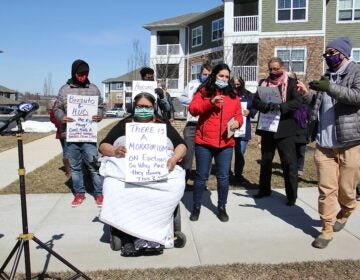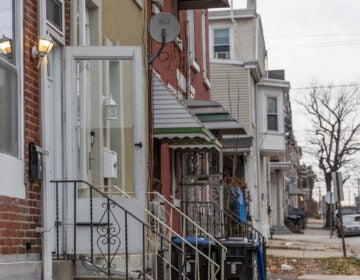Can moving to lower-poverty neighborhoods help kids long term? HUD awards Chester $3.5M to find out
The funding is part of an effort by the U.S. Department of Housing and Urban Development to study whether changing a child's zip code can improve their life in the long term.

A "For Rent" sign appears in a window. (Aaron Sousa/Unsplash)
The Chester Housing Authority is receiving about $3.5 million in federal funding to help dozens of families with young children move into neighborhoods with lower poverty rates and greater job and education opportunities.
It’s part of an effort by the U.S. Department of Housing and Urban Development to study whether changing childrens’ zip codes can improve their lives in the long term.
The Chester Housing Authority is one of nine agencies in the country chosen to receive this funding. The city is slated to get 56 new housing vouchers, in addition to the $3.5 million, which will pay to help people fill out lease applications, move into their new homes, and other logistical support for families. The Chester County Housing Authority also expects to receive 18 vouchers from the program.
The two housing authorities are still working out the details of how to distribute the vouchers, which will help cover rent for families with at least one child under 13. These vouchers can be used outside the city or county. These agencies were chosen, in part, due to their experience successfully managing vouchers.
Often, voucher recipients have a hard time finding landlords willing to take their subsidies, and they’re forced to live in neighborhoods with concentrated poverty and limited job and education opportunities.
“Their limited income alone provides a disadvantage to the depths of their housing search,” said Chester Housing Authority Executive Director Steven Fischer. “They might have a limited amount of time due to work hours. They might have a limited distance that they can actually go to search for housing due to a lack of funds, lack of transportation.”
Other obstacles to using these subsidies in higher-income neighborhoods include tenant application fees and increased security deposits.
This new HUD funding will allow housing authorities to pay for staff to help families with rental applications, pay for move-in fees or security deposits, help enroll children into their new school districts, and check in with families after they’ve moved to make sure they’re adjusting well to their new neighborhoods.
For six years, HUD will collect data to evaluate the effectiveness of what it calls “mobility” programs that provide these pre- and post-move-in supports.
HUD’s interest in capturing how effective these services are in getting families into what it calls “low-poverty neighborhoods” builds on research published in the American Economic Review in 2016 that found children who moved to these communities before the age of 13 had increased rates of college attendance and incomes that were 31% higher than children who didn’t participate in the program.
A 2019 study also found children who move to low-poverty neighborhoods experience lower rates of hospitalizations and hospital spending, while adults who make the move see reductions in conditions like extreme obesity.
The last time HUD collected data on mobility programs was the 1990s, but the impact of the program was widely missed until children in the program entered the job market years later. The initial HUD results suggested housing couldn’t improve people’s employment or earnings in the long run. Speaking on the NPR podcast “Planet Money,” researcher Nathan Hendren said when he looked at IRS data of the participants years later, he found children who moved before they turned 13 earned more when they were older and paid more taxes, meaning the program paid for itself.
Housing authorities across the country, including in Philadelphia, have experimented pairing vouchers with additional support to help families move to “high opportunity” areas.
One of the most promising mobility programs is in Seattle and King County, where the housing authority covers up to $2,600 of move-in costs. Housing “navigators” also prep voucher holders on how to market themselves to landlords.
Early results in 2019 showed 54% of families who received these additional services moved to higher opportunity areas compared to 14% of families who went searching for housing alone.
While HUD was optimistic about the success in Seattle, the agency wants to know if these efforts can work similarly in other locations. The Pennsylvania awardees will help HUD test and evaluate the effectiveness of mobility programs.
Fischer said the housing authorities are slated to meet with HUD officials at the end of the month to hammer out execution details. But some families will receive comprehensive support services — including pre-move support, help paying fees, and post-move support — while others will receive a sampling of services. HUD wants to know if there’s a difference in results.
HUD is spending $50 million and aims to enroll approximately 10,000 families through the chosen Pennsylvania housing authorities and agencies that span New York, Los Angeles County, and New Orleans.
 WHYY is one of over 20 news organizations producing Broke in Philly, a collaborative reporting project on solutions to poverty and the city’s push towards economic justice. Follow us at @BrokeInPhilly.
WHYY is one of over 20 news organizations producing Broke in Philly, a collaborative reporting project on solutions to poverty and the city’s push towards economic justice. Follow us at @BrokeInPhilly.

Get daily updates from WHYY News!
WHYY is your source for fact-based, in-depth journalism and information. As a nonprofit organization, we rely on financial support from readers like you. Please give today.






